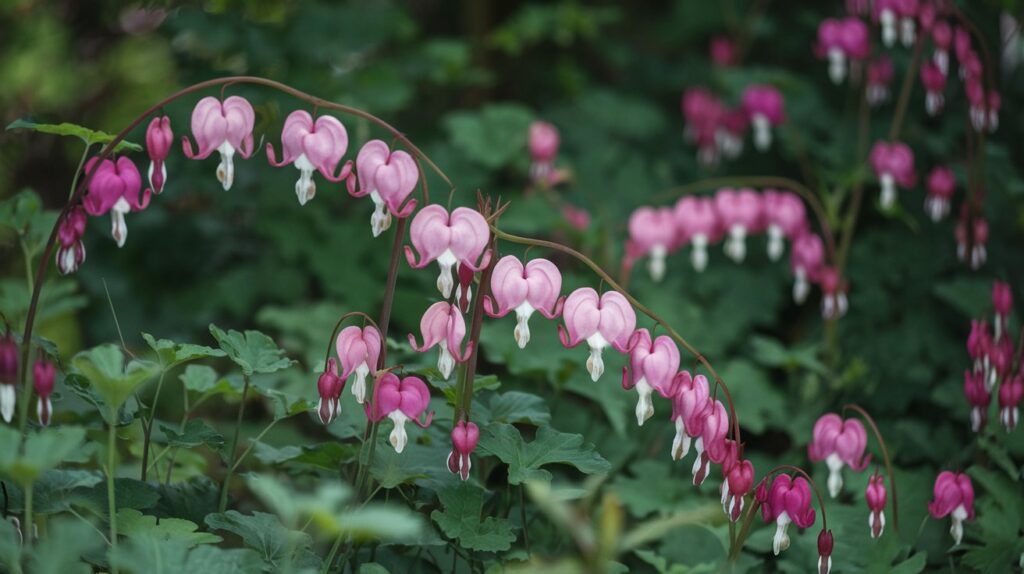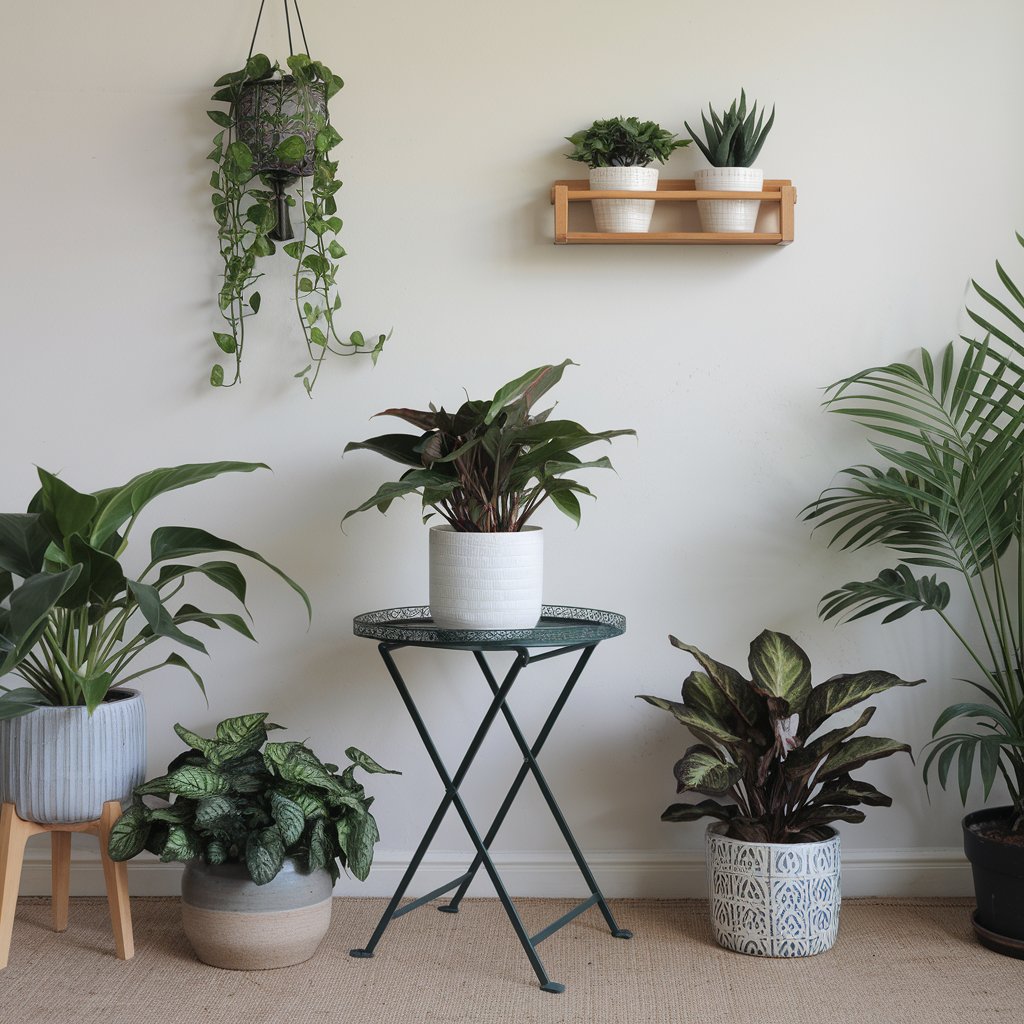The bleeding heart flower (Lamprocapnos spectabilis) is a truly enchanting plant with delicate, heart-shaped blooms that appear to drip with emotion. Its unique shape and graceful appearance make it a favorite among indoor plant enthusiasts. Whether you’re drawn to its romantic symbolism or its undeniable aesthetic appeal, the bleeding heart flower is a perfect choice to brighten up your home. Let’s explore how to grow and care for this mesmerizing plant indoors while unraveling its meanings and allure.
The Beauty and Symbolism of the Bleeding Heart Flower
The bleeding heart flower’s meaning is rich in emotion and romance, often symbolizing love, compassion, and heartbreak. Its iconic heart-shaped petals, usually in shades of pink and white, evoke feelings of tenderness. In some cultures, the meaning of the bleeding heart flower is linked to unrequited love, making it a poignant addition to bouquets and arrangements.
While the traditional pink bleeding heart flower is the most common, varieties like the white bleeding heart flower, blue bleeding heart flower, and even the black bleeding heart flower bring unique shades to this timeless plant, offering something for every taste.
Can You Grow Bleeding Heart Flowers Indoors?
Yes! Growing bleeding heart flowers indoors is absolutely possible with the right conditions. Although traditionally a garden plant, its compact size and adaptability make it an excellent choice for indoor cultivation. By mimicking its natural habitat, you can enjoy the elegant blooms of this plant year-round.

How to Care for Bleeding Heart Flowers Indoors
1. Choosing the Right Spot
The bleeding heart flower thrives in bright, indirect light. While it loves light, direct sunlight can scorch its delicate leaves and flowers. A north or east-facing window is ideal, as it provides sufficient light without the risk of overheating.
2. Soil Requirements
The plant prefers well-draining, nutrient-rich soil. Use a potting mix designed for flowering plants or create your own by mixing garden soil with organic compost. Keeping the roots well-aerated is crucial for preventing root rot.
3. Watering
The bleeding heart flower requires consistently moist soil, but be cautious not to overwater. Water when the top inch of soil feels dry, and ensure your pot has proper drainage to avoid waterlogging.
4. Temperature and Humidity
This plant prefers cooler temperatures between 60-75°F (15-24°C). High humidity is also beneficial, so consider placing a small humidifier nearby or misting the plant occasionally.
5. Fertilizing
Feed your bleeding heart plant with a balanced liquid fertilizer every 4-6 weeks during the growing season (spring and summer). Reduce feeding during the dormant period in fall and winter.
Popular Varieties of Bleeding Heart Flowers
- Classic Pink Bleeding Heart Flower
- The traditional variety with pink hearts and white tear-like tips.
- White Bleeding Heart Flower
- A pure and serene option, perfect for minimalist aesthetics.
- Blue Bleeding Heart Flower
- Though rarer, it offers an ethereal, almost magical appearance.
- Purple Bleeding Heart Flower
- Adds a royal touch to any indoor space.
- Black Bleeding Heart Flower
- A bold and dramatic variety for those who love unique plants.
Can You Grow Bleeding Heart Flowers in Your Garden?
Absolutely! While the bleeding heart flower thrives indoors, it also makes a stunning addition to outdoor gardens. These plants prefer shady to semi-shady areas, making them ideal for woodland gardens or as border plants. They pair beautifully with ferns and other shade-loving plants.
To grow them outdoors:
- Planting Time: Early spring or fall.
- Soil: Rich, well-draining soil.
- Watering: Regular watering during dry periods.
- Winter Care: Bleeding hearts are perennial plants that will die back in winter but regrow in spring. Mulch the base in late fall to protect roots from frost.

Unique Uses for Bleeding Heart Flowers
1. Bleeding Heart Flower Bouquets
Their romantic shape and soft colors make bleeding heart flowers a perfect choice for bouquets, especially for weddings or anniversaries. Pair them with roses, lilies, or ferns for an elegant arrangement.
2. Symbolic Gifts
Given their deep symbolism, bleeding heart flowers are thoughtful gifts for loved ones. Whether to celebrate love or offer comfort during difficult times, they effortlessly convey heartfelt emotions.
3. Decorative Houseplants
Their stunning foliage and blooms make them an indoor decor star. Place them on shelves, windowsills, or as a centerpiece to enhance your home’s aesthetic.
Common Problems with Bleeding Heart Flowers and How to Solve Them
- Yellowing Leaves
- Cause: Overwatering or poor drainage.
- Solution: Adjust your watering schedule and ensure the pot has proper drainage holes.
- Drooping Stems
- Cause: Underwatering or excessive heat.
- Solution: Increase watering frequency and relocate the plant to a cooler spot.
- Pest Infestation
- Cause: Aphids, spider mites, or slugs.
- Solution: Use organic insecticidal soap or neem oil to treat pests.
Health Benefits and Symbolic Appeal
While bleeding heart flowers are primarily admired for their beauty, they also carry a calming effect, perfect for creating a tranquil indoor environment. Their soft blooms and lush foliage can reduce stress and promote relaxation, making them an ideal choice for meditation spaces or cozy corners.
Conclusion
The bleeding heart flower is more than just a plant—it’s a living work of art that tells a story of love and emotion. Whether you’re drawn to its stunning blooms, rich symbolism, or soothing presence, this plant will surely captivate your heart. Growing it indoors or in your garden is a rewarding experience, and with the right care, it will grace your space with its beauty for years to come.
So why wait? Add the charm of the bleeding heart flower to your home or garden and enjoy its timeless allure!
For more tips on indoor plant care and propagation, check out Indoor gardening.




